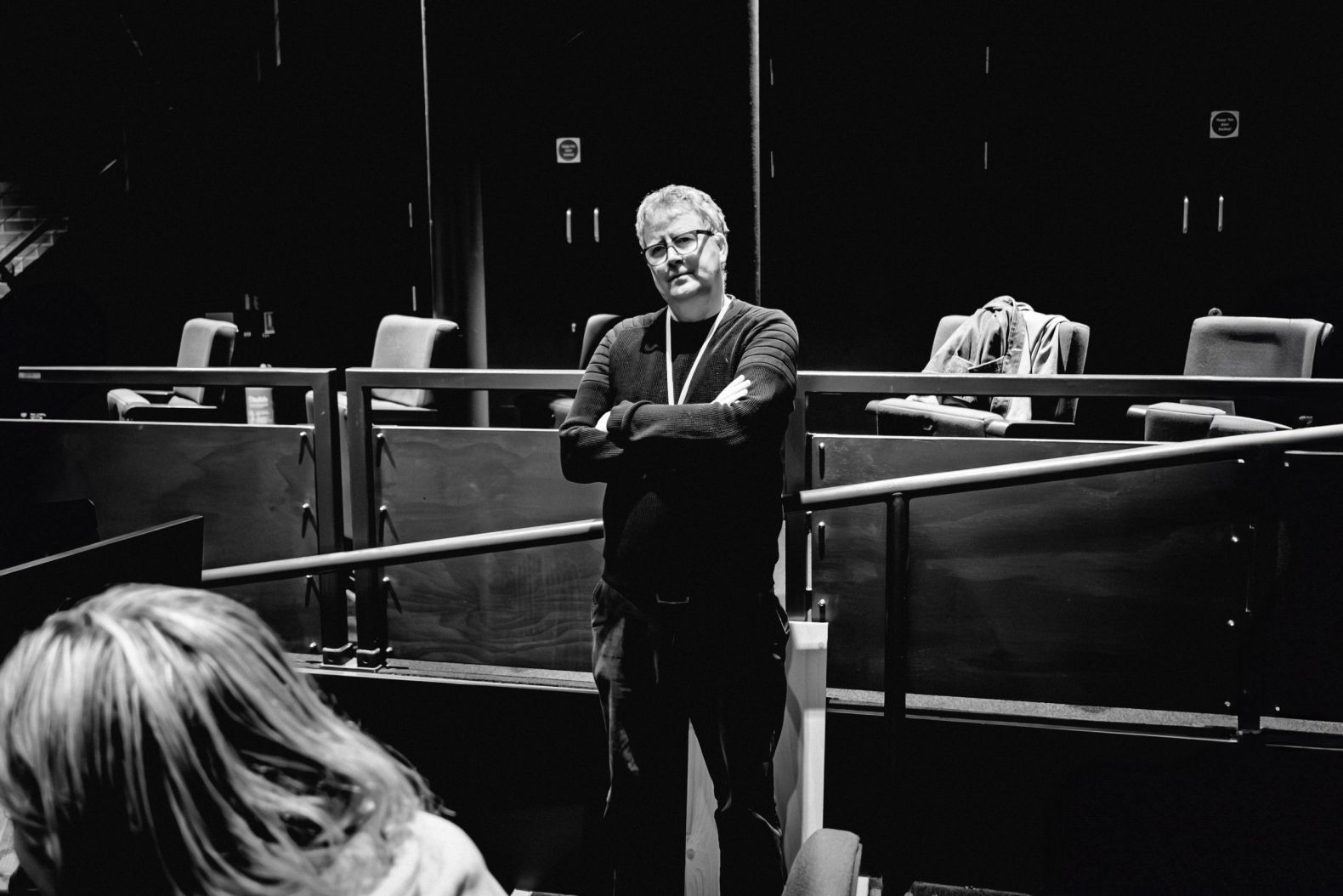FRANKENSTEIN - Q&A with Artistic Director Andrew Quick

After collaborating on Night of the Living DeadTM - Remix and Dracula: The Untold Story with Leeds Playhouse, you’re now tackling Frankenstein. What is it about dark Gothic tales that appeals to you and imitating the dog?
I suppose we’ve always been interested in gothic themes – ghosts, parallel worlds, people trapped in a kind of purgatory, that sort of thing. The Gothic is theatrical by its very nature, and you can attach some big themes to the genre. And it plays around with visuals and sound, quite theatrically and cinematically, which creates that space to draw inspiration and influence from. We also collectively watch a lot of horror films. It’s in our blood, so to speak.
So why Frankenstein and why now?
Perhaps a little bit of what you just mentioned. But mostly because it’s a novel that continues to influence contemporary culture. You find references to it everywhere. It’s often claimed to be the first science fiction novel, and one of the great things about the overall story is that you can attach so many contemporary concerns and issues to it, which makes it ripe for adaption. It’s an amazing novel in so many ways, written by a young woman at the beginning of her career. It’s not easy to adapt in a literal way as it has these different narrative structures within it: stories within stories. But it explores so many contemporaneous concerns: what it is to be human, the necessity of love to survive, the follies of ambition, what happens when you play at being God, creating a consciousness that is not human, and the very problem of human consciousness itself.
Our take looks at the personal elements of the story; what it is to be human and the whole question of human consciousness. In many ways, our version is a love story or at least a story that explores what it is to be loved and what it is to be rejected.
Do audiences need to have read the novel?
Even if they haven’t read it, I think most people have an idea of the story. I mean if you know the novel or have seen the films then you bring that experience with you, but it’s not necessary to enjoy the show. In our adaptation you’ve got the story of Frankenstein with the character of Victor Frankenstein becoming obsessed with the problem of where life starts as he embarks on building a human, a creature if you will, out of body parts. We tell this story and against a contemporary narrative of a young couple who discover they are pregnant and are fearful of what it means to bring life into the world. Both stories are about choice, connection and companionship. Two actors play all the roles across both narratives, and we make a series of connections between the two stories. Is it going to be a typical imitating the dog show in terms of the staging? It will definitely have the look of an imitating the dog show. There’s a beautiful set designed by Hayley Grindle with projection by Simon (Wainwright, co-Artistic Director of imitating the dog) and a brilliant team but we’re not using live cameras in this piece. We want to focus on the intimacy that we are exploring between our two performers and the two narrative threads. We also have a movement/dance thread weaving together the parallel stories, created by exciting Belgian choreographer Casper Dillen. This harks back to our first shows in the late 1990s where we often used dance and movement in our work.
Frankenstein is often seen as a horror story, especially in terms of how the cinema has treated the novel. How would you describe this version?
It’s a story of violence and revenge, both born from rejection. There’s murder and threat but it is not explicit and there’s no actual gore. There’s threat in the couple’s story as well, but it is distant, something they see from their sixth floor flat. One of the things we have been working on is the presence of the ‘creature’ and what that is. It’s hard to get away from the stitched face and the bolts through the neck, but you have to if you want to get at the heart of the novel and Mary Shelley’s incredible writing. One of the most striking images in the novel, and a source of inspiration for me, is a reference to the Arctic - the ice keeping the body parts from decomposing. This is something we’ve used a lot in the piece, Shelley’s references to weather and the landscape. It is as if the whole world in the novel is going through some major upheaval in terms of the climate. This feels so relevant to us now.
What do you hope audiences take from your version of Frankenstein?
Firstly, I hope they are entertained. I mean that’s what you make theatre for – to captivate people, to entrance them into a space, into a world that they normally would not experience. Frankenstein is an extremely sad and tragic tale; one that’s moving and exhilarating at the same time. I hope we can convey some of this. I think it’s also one of the most intimate pieces we have made. What’s interesting about the novel is that it is constructed around a series of set piece confrontations between two people, Walton and Victor Frankenstein, Victor and the creature and so forth. We have tried to keep this sense of confrontation but allow them to be theatrical and personal.
What’s been the biggest challenge so far?
Telling a story with two people is a challenge, but an exciting one. We have a great team that allows us to weave so much around our two excellent performers. Great projection, a magical set, original sound, superb lighting. I’m really looking forward to our Frankenstein making the stage come alive.



